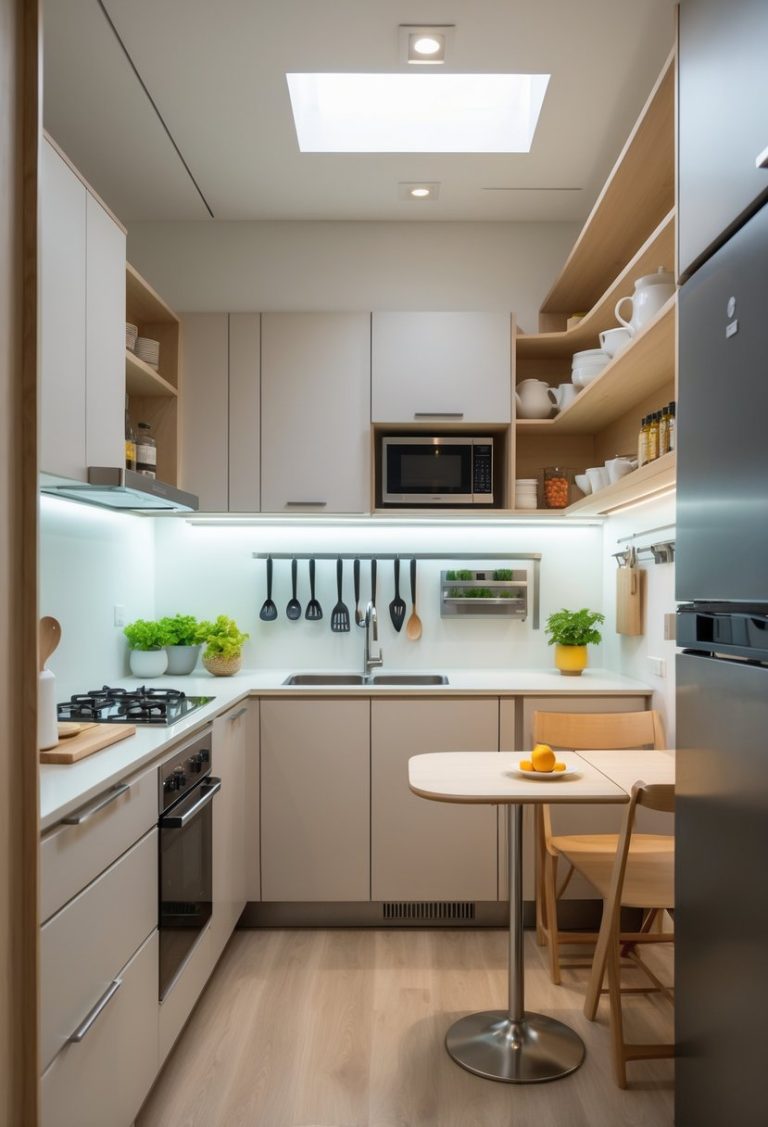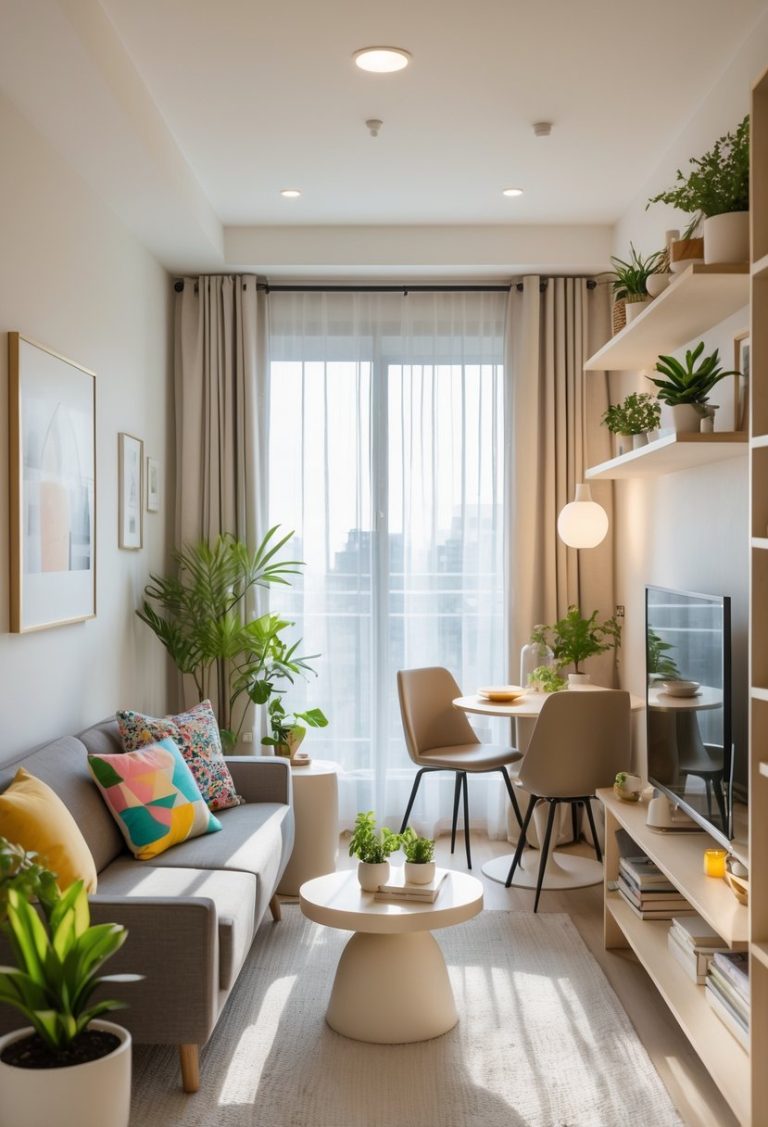7 Small Studio Apartment Ideas to Maximize Space and Style
Living in a small studio apartment can be challenging due to limited space, but it also offers a chance to use creativity in design and organization. Maximizing the available area is important to make the apartment comfortable and functional.
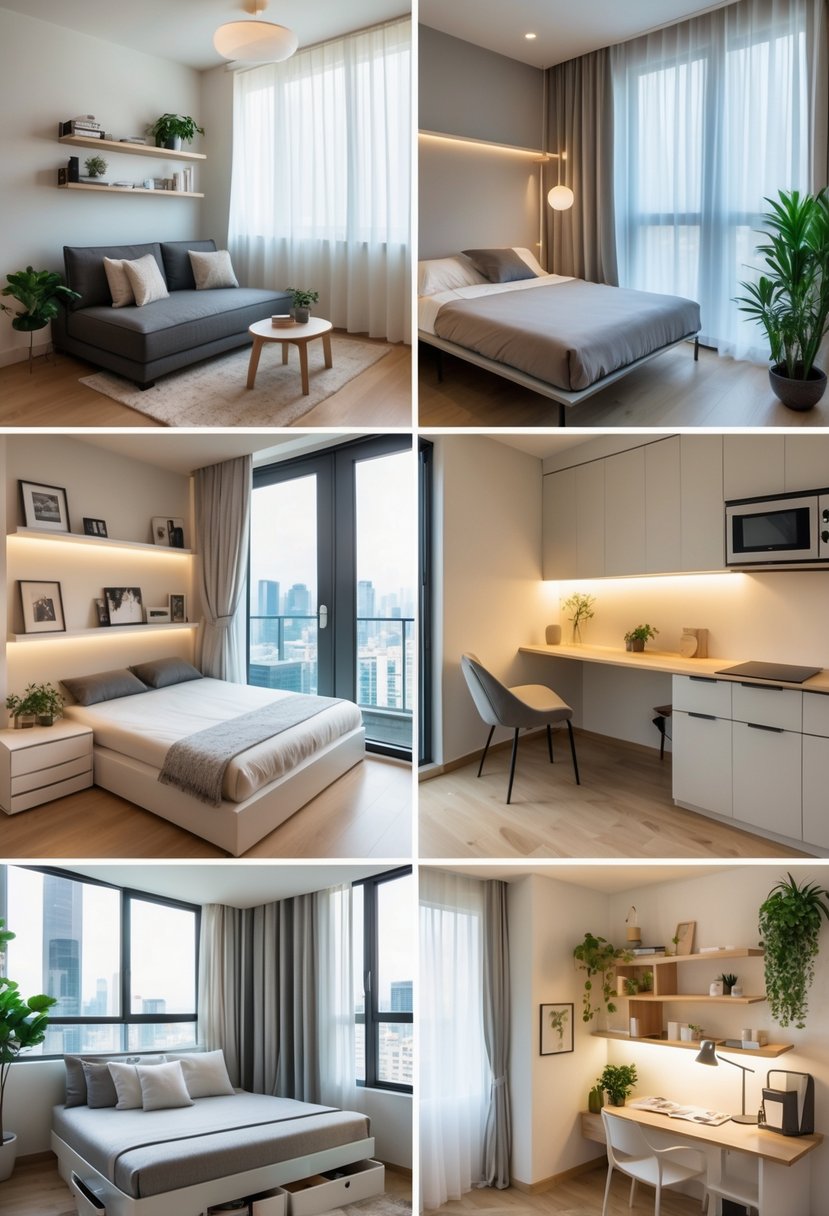
Small studio apartment ideas focus on smart use of space, lighting, and furniture to improve the living experience. These ideas help people make the most out of their compact homes without feeling crowded or cluttered.
1) Use multifunctional furniture like a sofa bed or storage ottoman
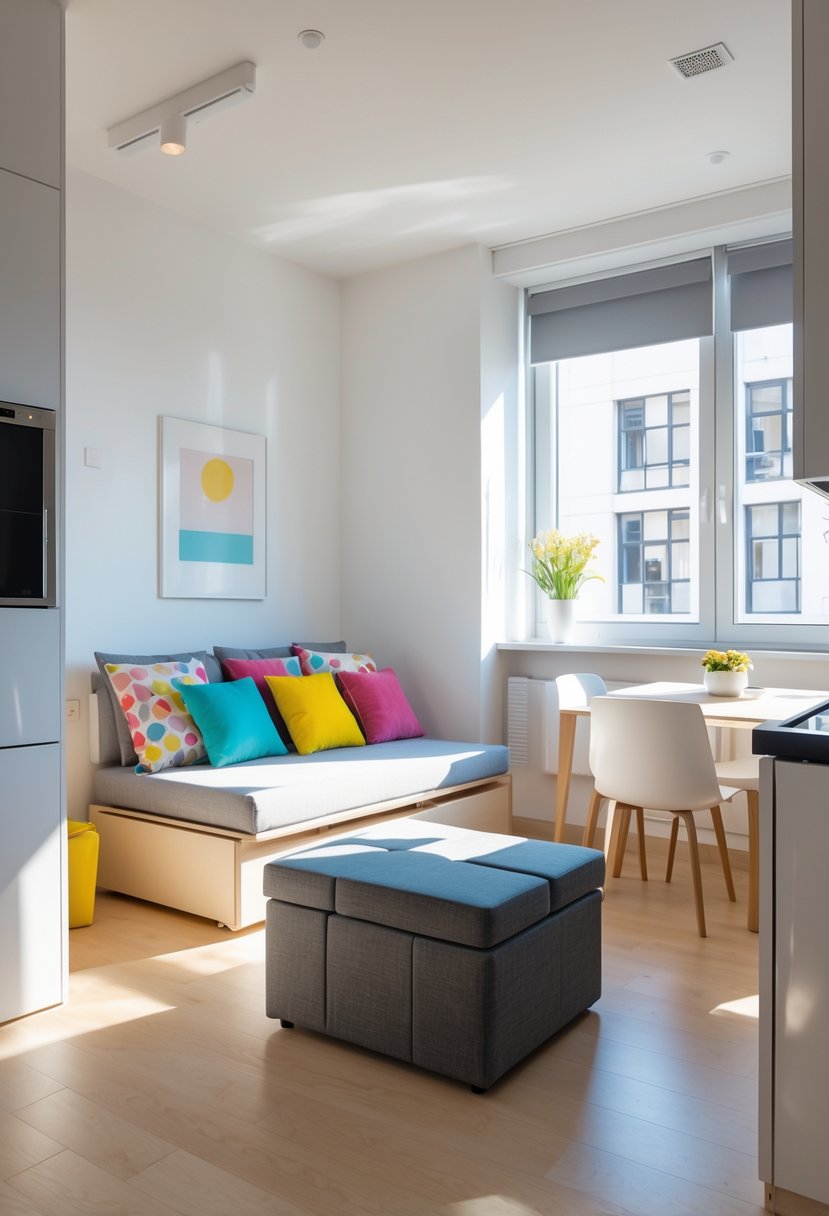
They can save space by serving more than one purpose. A sofa bed works as a couch during the day and a bed at night. This is useful in small studios without extra rooms.
Storage ottomans give a place to sit and hide items inside. Choosing furniture with built-in storage helps keep the area tidy and free of clutter.
2) Create distinct zones with rugs or room dividers
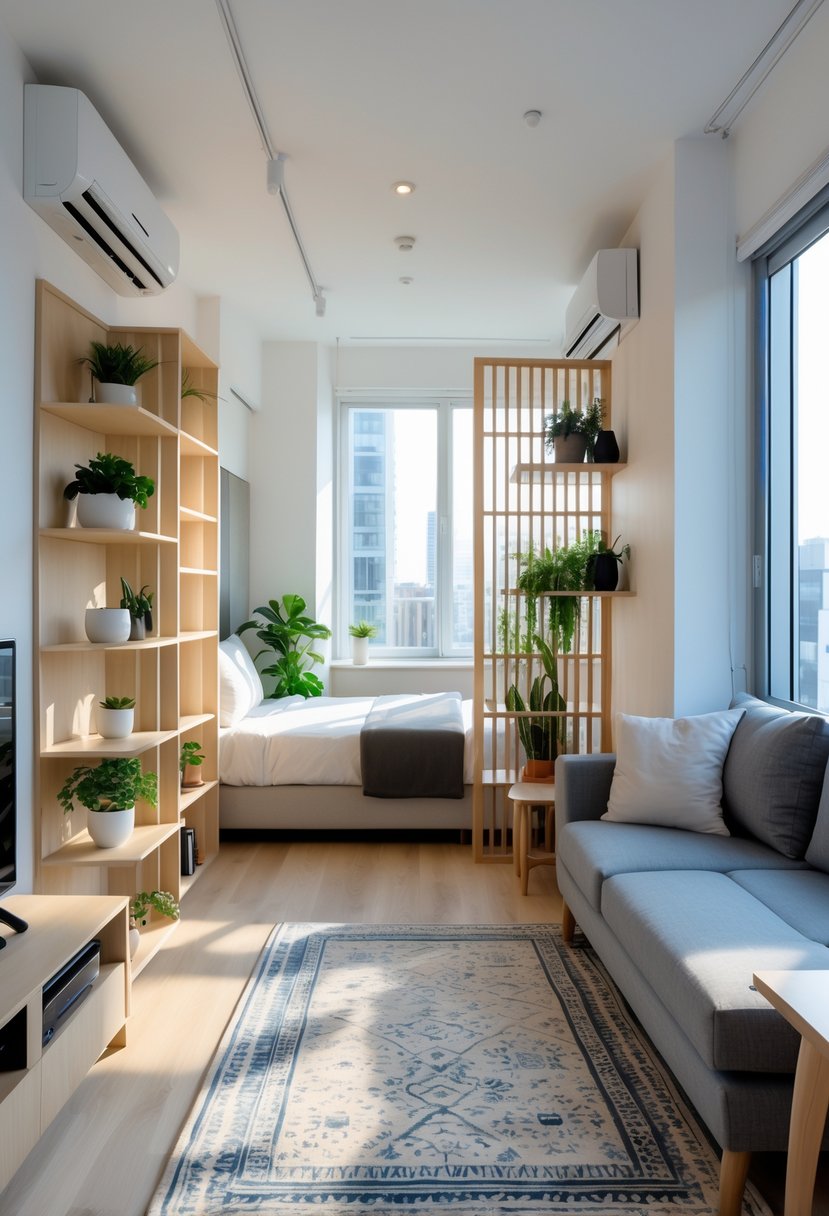
He or she can use rugs to mark different areas in a studio apartment. Rugs add color and texture, while separating living and sleeping spaces.
Room dividers like bookshelves or screens offer privacy without closing off the room. They help create clear zones for work, rest, and relaxation. These options keep the space organized and functional.
3) Maximize vertical storage with wall shelves and tall bookcases
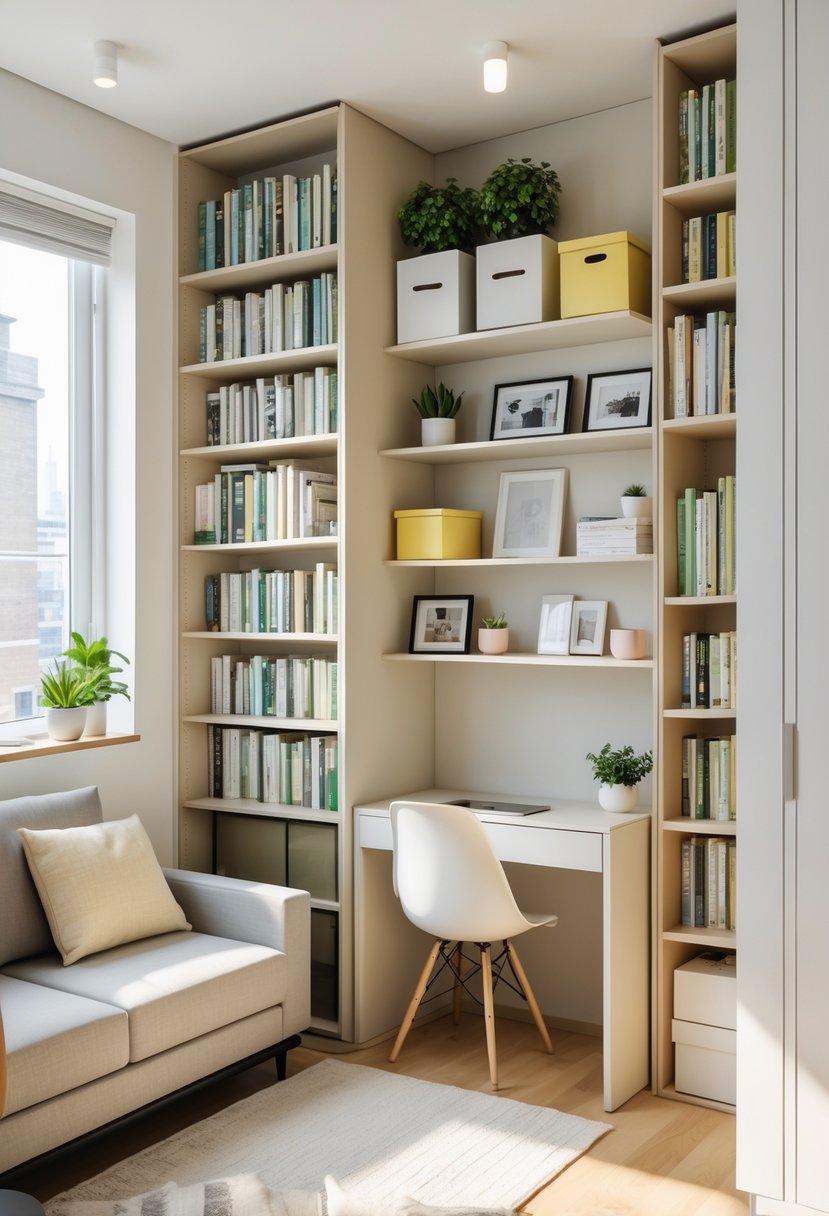
He can use wall shelves to keep items off the floor and create extra storage. These shelves work well for books, decor, or kitchen supplies.
Tall bookcases are another good option. They use height rather than floor space, which is important in a small studio.
Both options help organize belongings while making the room feel less cluttered. Proper installation is key for safety and stability.
4) Opt for a daybed to combine seating and sleeping areas
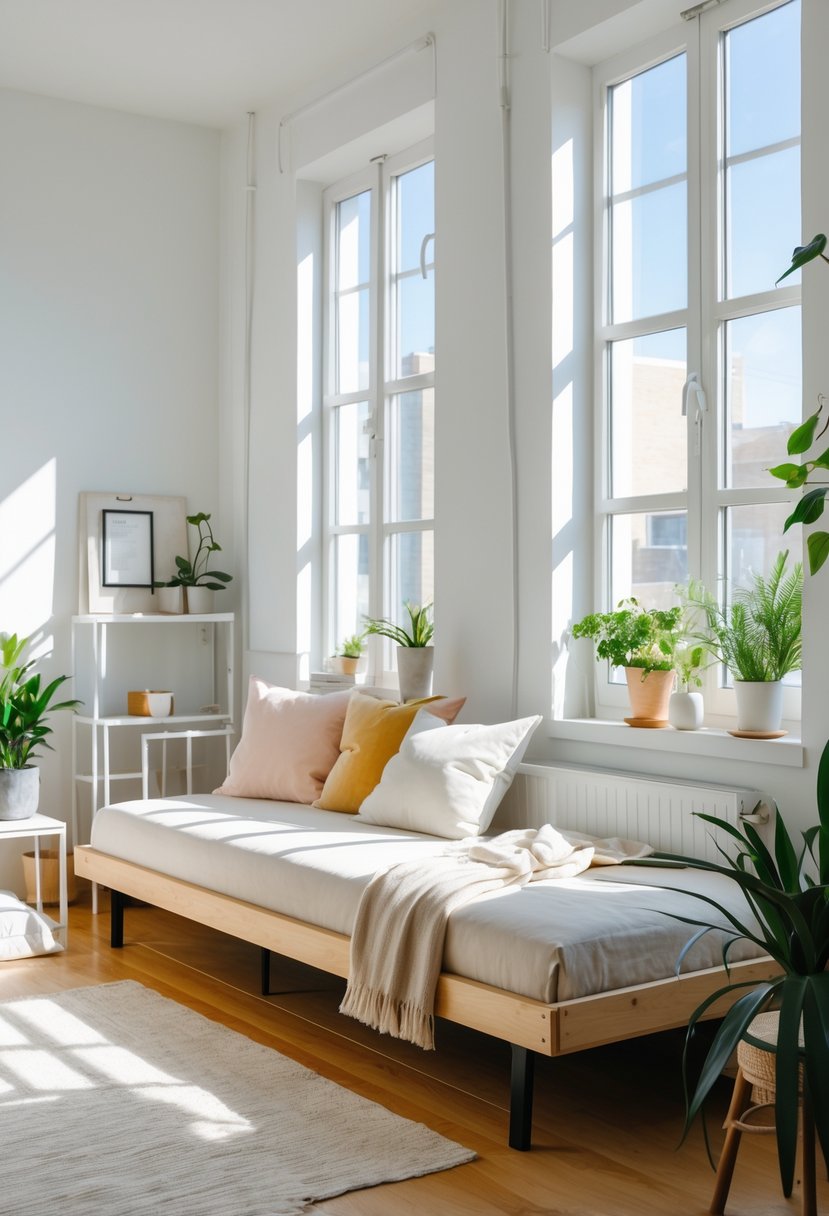
A daybed works well in a small studio by offering both a place to sit and a bed to sleep on. It helps save space without needing separate furniture for seating and sleeping.
People can use it as a couch during the day and a bed at night. Some daybeds also include storage underneath, adding extra functionality.
5) Choose light, neutral color palettes to open up the space
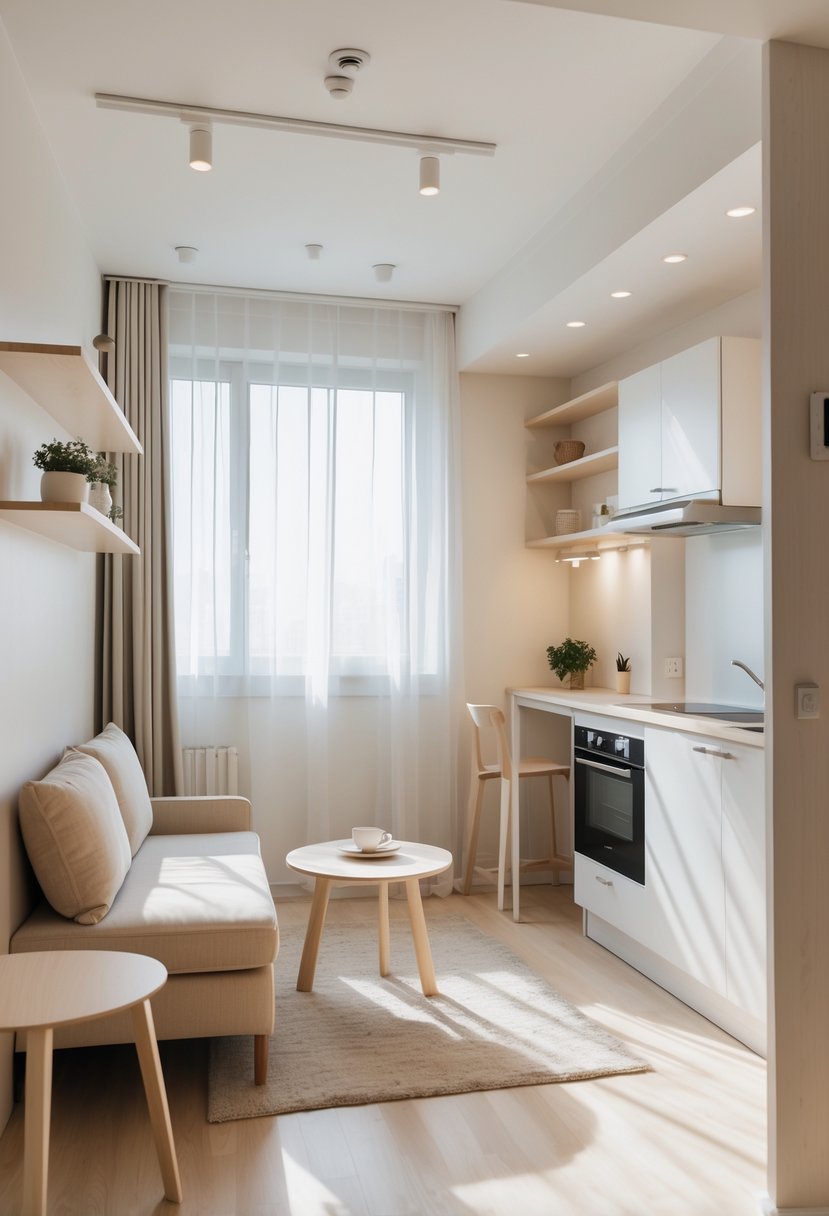
Light, neutral colors like white, beige, and soft gray help make a small studio feel larger and brighter. They reflect natural light and create a sense of openness. Using these shades on walls and furniture can build a calm, timeless look that avoids clutter and visual noise. This makes the space feel more inviting and less cramped.
6) Install a fold-down desk to save floor space for a work area
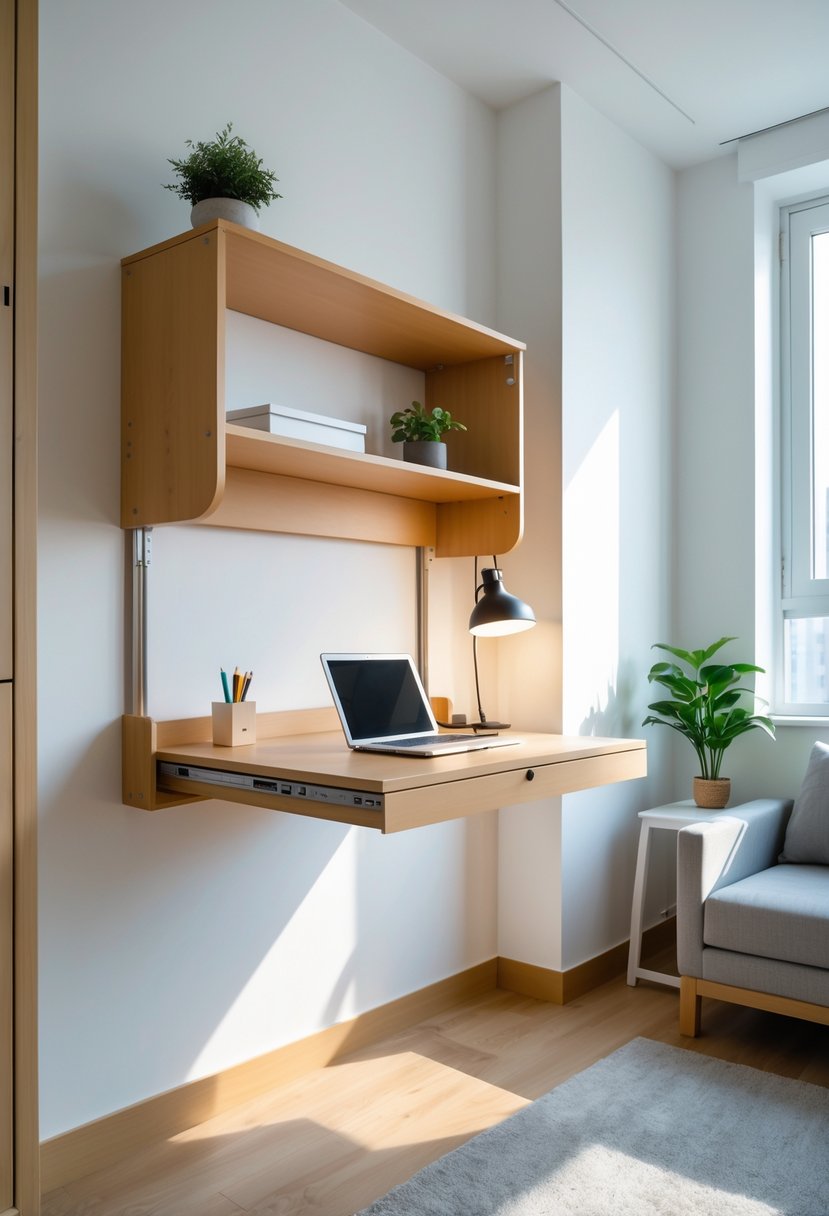
A fold-down desk is a practical choice for small studios. It attaches to the wall and folds up when not in use, freeing valuable floor space.
This type of desk helps create a dedicated work area without crowding the room. It suits people who need a workspace but want to keep their studio open and uncluttered.
7) Incorporate mirrors to visually expand the apartment
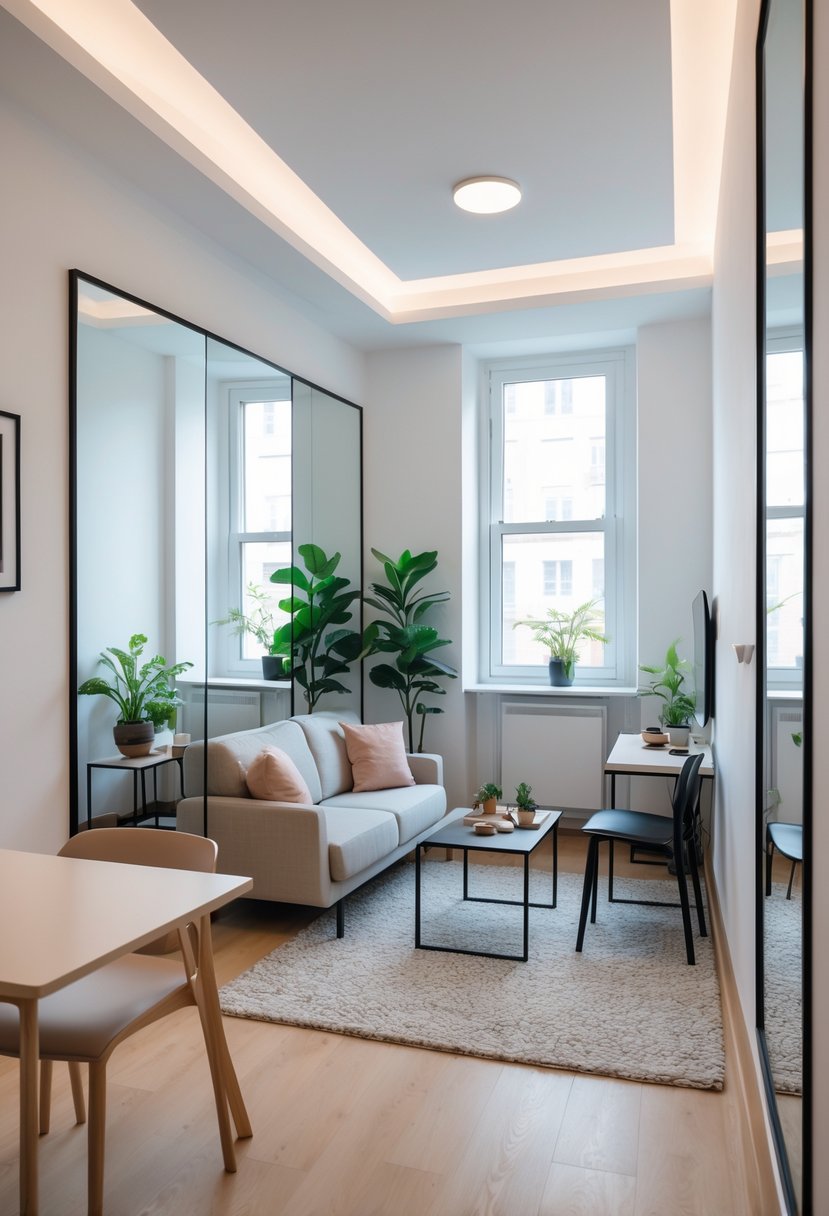
Mirrors reflect light and create the illusion of more space. Large mirrors with simple frames work best for small studios.
Placing mirrors opposite windows can help bounce natural light around the room. Floor mirrors brighten dark corners and add depth.
Choosing oversized or angled mirrors adds both style and a sense of openness without crowding the space.
Small Studio Design Principles

Small studios need careful planning to use space well and keep the area bright and open. Light and clear divisions for different activities make a big difference.
Maximizing Light in Limited Spaces
Natural light should be the focus. Using light-colored walls, such as white or pale shades, helps reflect sunlight throughout the space. Painting brick or textured walls white can also brighten a room.
Avoid heavy, dark window treatments. Instead, choose sheer curtains or blinds that let in daylight while maintaining privacy.
Mirrors are a good tool for bouncing light around. Placing them opposite windows can make the room feel larger and more open.
Keep furniture low-profile or transparent, like glass or acrylic, to avoid blocking light paths.
Creating Functional Zones
In a small studio, different activities must have clear spaces. Dividing areas for sleeping, eating, and working helps prevent clutter and keeps the room organized.
Use multifunctional furniture, like a sofa bed or foldable desk, to save space. Rugs and room dividers can mark distinct zones without overwhelming the room.
Vertical storage, such as shelves or wall hooks, frees up floor space. This keeps belongings off surfaces and maintains a clean look.
Each zone should be arranged to support its purpose without interfering with others. For example, keep the sleeping area away from the kitchen to reduce noise and smells.
Addressing Common Studio Apartment Challenges
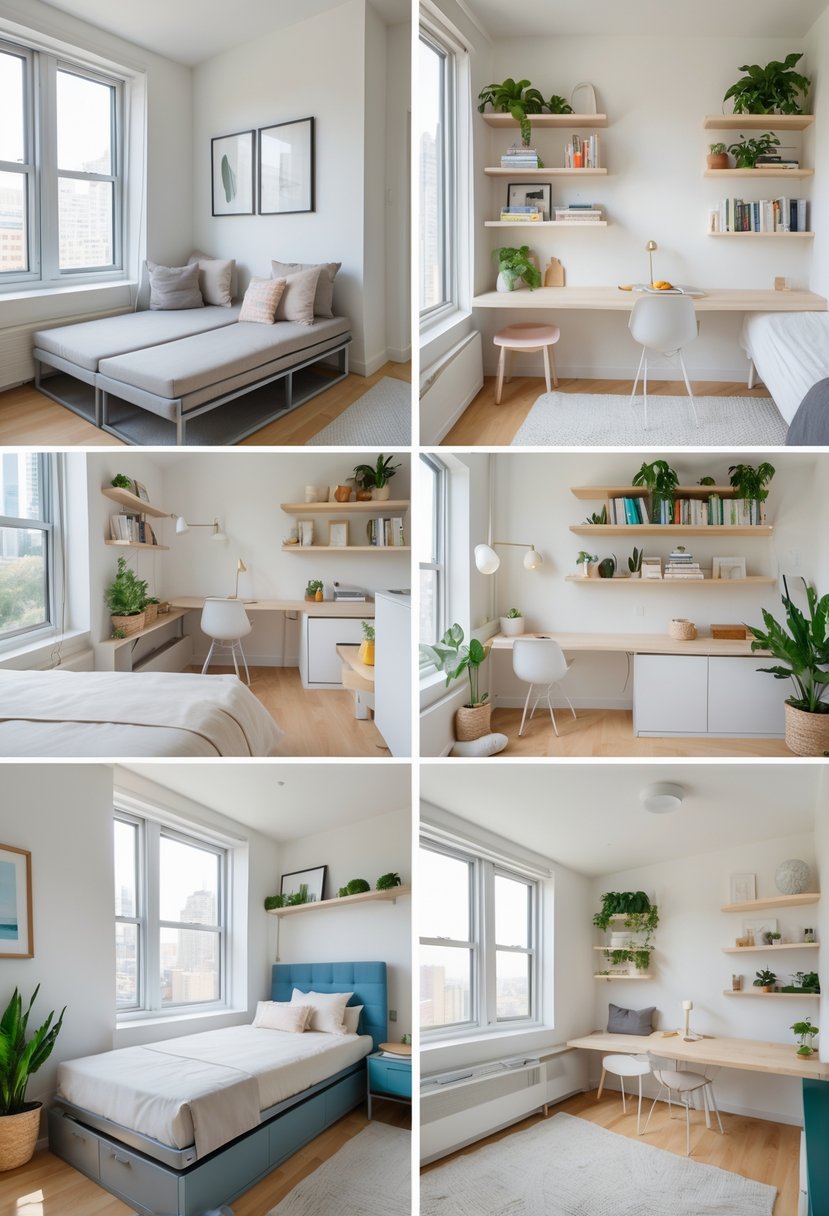
Studio apartments often come with space limits and privacy issues. Finding smart ways to store belongings and create separate zones can improve comfort and organization.
Managing Limited Storage
Storage is often the biggest challenge in a small studio. Using multifunctional furniture like beds with built-in drawers or fold-out desks helps save space.
Vertical storage is key. Shelves placed high on walls or over doorways make use of empty space. Clear storage bins or baskets keep items organized without cluttering the room.
Hooks and racks can be added inside closets or on walls to hang bags, hats, or kitchen tools. Keeping only essential items and regularly decluttering also maintain a tidier living area.
Maintaining Privacy in Open Layouts
With no walls to separate rooms, privacy can feel limited. A room divider or curtain can create a private sleeping or work area without permanent construction.
Furniture placement can help, too. Placing a bookshelf or sofa to block sightlines forms separate zones. Choosing translucent screens keeps light flowing while still providing privacy.
Using rugs and varied lighting also defines different areas. This helps signal where one function ends and another begins, making the space feel more private and organized.

